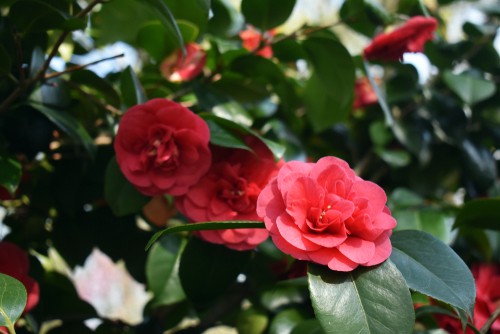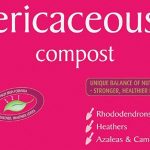Last updated on March 29th, 2022
Our site is reader supported, this means we may earn a small commission from Amazon and other affiliates when you buy through links on our site.
If you are growing Camellias, you want to make sure they get the right amount of fertiliser, and at the right time of year. But when exactly is that? And how much do you give them? This article will help give you a better understanding of when and what you should be feeding all of your Camellias so that they can remain top quality producers.
The quick answer is that Camellias should be fed in spring, after flowering, with an acidic or ericaceous feed that is sold for feeding Camellias, Rhododendrons and Azaleas. Then feed every few weeks with an ericaceous liquid feed if grown in containers until around September. Below we have some recommended feeds you can also buy.
When to feed your Camellias
The right amount of food at the right intervals will make the difference between a successful, thriving shrub and one that just barely survived.

Feed camellias in spring after flowering
It is recommended that you fertilise your Camellias in the spring, right after the flowers have faded. However, prior to fertilising, make sure you pick off any faded flowers from the shrub using a process called deadheading. Concurrently remove any flowers that have fallen around the shrub on the ground. You want to remove all of this so that the Camellia doesn’t start forming seeds and so that the bush looks beautiful.
Camellias, just like any plant, have finite energy resources and it will be dispersed in order of what’s most important. If you fail to deadhead before you fertilise, you will simply be giving your Camellia extra energy that it will allocate towards seed formation, draining energy from the rest of the plant and stunting growth immediately. By removing the flowers after they have finished you can also help control one of the most common problems gardeners experience with Camellias, blight.
Feed over summer to promote new growth until around September
You should be fertilising in the middle of summer at least two months prior to the first frosts so that all of the new growth has an opportunity to harden in the cooler temperatures before the onset of winter. In most parts of the UK, this is usually around September. You’ll know if you waited too long because the new twigs and branches will suffer frost damage because they want haven’t had time to mature.
How to feed Camellias
 Sulphate of iron for feeding Camellias in spring – Available from Amazon.co.uk
Sulphate of iron for feeding Camellias in spring – Available from Amazon.co.uk
When it comes time to feed your Camellias, you want to pull back the mulch around the base of your plant before fertilising. This will prevent the fertiliser from running off elsewhere and never making it to your plant. Thankfully these shrubs don’t need a lot of food. In fact, having too much nitrogen can burn their leaves. If you start to see all the leaves fall off right after you added fertiliser, that’s probably what happened so its better to under fertilise than over-fertilise.
It’s best to spread sulphate of iron or use slow-release fertiliser for acid-loving plants all around where the roots are. You can actually scratch the surface of the soil with a garden rake about 3-4cm deep, then add the fertiliser on top and cover again with mulch or ericaceous compost. Water it deeply directly after you have added this fertiliser so that all of the nutrients are able to break down and get into the soil.
If you have a well-established Camellia, one that is grown directly in the ground in your garden and not in a container, you can use a special fertiliser designed for Camellias. Camellias prefer soil pH levels between 4.5 and 6.5 so the Camellia specific fertilisers will acidify your soil, which is why you want to use them on established plants that are grown in the ground. Different brands will have varying percentages of nutrients so it’s important that no matter what type of food you buy, you read the label and follow the instructions printed on the label.
 Slow-release fertiliser for feeding Camellias – Available from Amazon.co.uk
Slow-release fertiliser for feeding Camellias – Available from Amazon.co.uk
Caution:
If, after feeding your Camellia you notice that the leaves turn yellow and drop immediately, it could be symptomatic of too little fertiliser, or a pH level that’s too high in the soil itself. You should use an at-home ph test kit to verify the pH level of your soil before adding more fertiliser. You should rule that out before you increase feeding because too much fertiliser can, as mentioned, harm the plant as well.
Overall, by paying attention to when and how you feed your Camellias, you can make sure that the shrubs produce stunning flowers, stay healthy and vigorous throughout the season.


